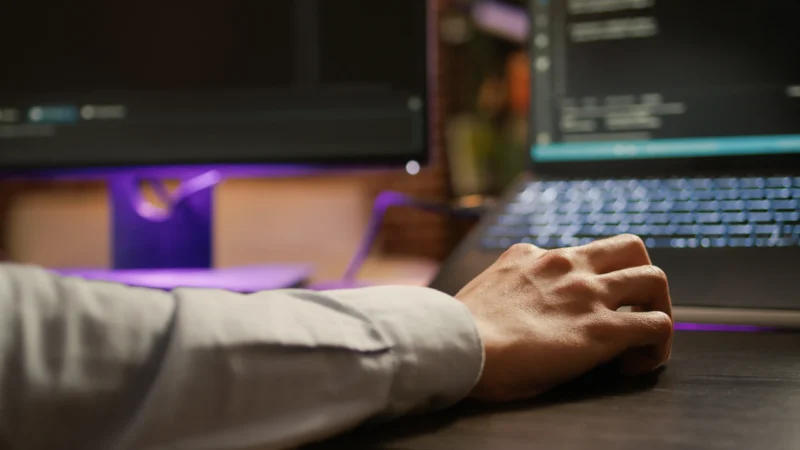As the debate ramps up over who should, shouldn’t, will and won’t work from home, with headlines swinging between productivity wins, burnout risks, and office culture nostalgia, one thing rarely makes the news: what it actually means for your working from home tax deductions.
While everyone else argues about the pros and cons of hybrid life, the ATO has quietly turned the simple act of working from home into a tax trap wrapped in red tape.
The 70¢ Fixed Rate Method Explained
For 2024–25, the ATO increased the fixed-rate method from 67¢ to 70¢ per hour, but that’s where the generosity ends. This new rate absorbs your electricity, internet, phone, stationery, even that $160 security subscription you keep for peace of mind.
Sounds tidy, right? Until you realise the ATO just bundled up all your legitimate, itemised home office expenses and vanished them behind a single coin-sized number.
Once upon a time, you could claim your mobile, internet, printing, and office supplies separately — real expenses for real work. Now, under the so-called “simplified” fixed rate, you can’t. It’s all supposedly covered by that magical 70¢, whether you work in a studio apartment or a suburban power-draining sauna.

Why Your Working From Home Tax Deductions Are Shrinking
If you worked 1,800 hours from home, your total deduction is capped at $1,260 (1,800 × 70¢).
But compare that with what those costs actually look like in the real world:
| Expense | Annual Cost | Business Use % | Deductible |
|---|---|---|---|
| Electricity | $420/m × 12 = $5,040 | 20% | $1,008 |
| Internet | $120/m × 12 = $1,440 | 50% | $720 |
| Mobile | $90/m × 12 = $1,080 | 70% | $756 |
| Stationery/Printing | $400 | 100% | $400 |
| Security Subscription | $160 | 100% | $160 |
| Total | — | — | $3,044 |
That’s $1,784 more than the fixed rate — and that’s before depreciation on your desk, chair, or laptop, which remains deductible under both methods (for now, anyway).
With around 40% of Australians working from home at least part of the week, the ATO’s so-called “simplification” has quietly erased thousands of dollars in legitimate working from home tax deductions for millions of people.
The Hidden Record-Keeping Burden
While the fixed-rate method is sold as easier, it now demands more record-keeping than ever. You must log every single hour worked from home — not estimate, not guess, but document the lot for the full year.
If the ATO really wanted simplicity, they wouldn’t have turned working from home into a part-time data-entry job.
It’s a bitter pill when the average Australian already claims around $3,000 in work-related deductions each year. For most, the new rules mean more paperwork, fewer deductions, and a clear reminder that when the ATO says “simplified,” it usually means simplified for them, not you.
💡 TaxTank Tip: Track Both Methods to Maximise Deductions
Don’t play the guessing game. With TaxTank, you don’t have to choose blindly between the fixed and actual cost methods — you can record both throughout the year and see which delivers the bigger working from home tax deductions at tax time.
TaxTank’s Home Office Diary makes it seamless: log your hours, upload your bills, and keep everything in one place. When tax time rolls around, TaxTank runs the numbers for you, so you’re not stuck guessing whether the ATO’s 70¢ shortcut is actually worth it.
Because “simple” shouldn’t mean losing out. And “fair” shouldn’t mean 70¢ an hour buried under ATO red tape.
Stop losing money to the 70¢ trap. Start tracking your home office expenses with TaxTank today and see which method gives you the biggest tax deduction.
FAQ: Working From Home Tax Deductions
Q: How does TaxTank help with working from home tax deductions?
A: TaxTank lets you log hours, upload bills, and automatically calculates both fixed and actual cost deductions so you can choose the best option.
Q: Can I switch methods mid-year in TaxTank?
A: Yes, you can switch the methods throughout the year to see which option works best for you.
Q: Can I still claim my internet and electricity separately?
A: Only if you use the actual cost method. The fixed-rate 70¢ per hour bundles them together.
Q: How many hours do I need to log?
A: Every hour you work from home for the full financial year.
Q: Can I still claim my desk, chair, or laptop?
A: Yes. Depreciation on furniture or equipment remains deductible under both the fixed rate and actual cost methods.
Q: Is the fixed rate always worse?
A: Not always. It depends on your actual expenses and hours worked. TaxTank helps you compare both methods easily.
Q: Do I need to keep receipts for the fixed-rate method?
A: You should still keep records of hours worked. For actual costs, you must keep receipts for each expense.





